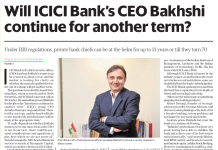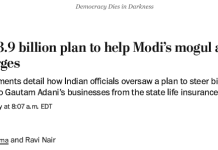KATYA NAIDUMAY 29, 2019, 19:43 IST
- IndusInd Bank’s provision for losses from IL&FS may be too little too late, according to an analyst.
- The provision for bad loans in the latest quarter should have come at least eight months ago, says Hemindra Hazari.
To start with, Mumbai-based IndusInd’s profits fell by 62% in the fourth quarter compared to ₹9.5 billion to ₹3.6 billion. Yet, investors and analysts are happy.
Their rationale — bad loan burden due to its defaulter IL&FS — was not as bad as expected. The street had expected the bank to take a much bigger than it had.
Between January and March 2019, the bank made a provision of ₹12.7 billion against its loan to the troubled infrastructure lender, which had failed to pay back what it owes to banks, precipitating a liquidity crisis.
A provision is where a bank sets aside some of its money to cover a loan that it believes is unrecoverable. For this, banks have to typically dip into their coffers, a step that can hurt its profits.
Half truths
But there are some who believe that the amount that IndusInd provisioned for the bad loan to IL&FS, might not cover the extent of the exposure it has to IL&FS. And, that there is an element of truth that may be missing from their statement.
For one, it became obvious in September 2018 that IL&FS had turned insolvent, but the full impact of it was not conveyed to analysts in a transparent manner. Added to that, the loan that IndusInd gave IL&Fs is also unsecured, which means there is no collateral that the borrower has offered, which could have helped recover it.
IndusInd chose to soften the blow to its investors by making only 13.8% (of the loan) provisioning in the second quarter ending September. It also assured the analysts that it may eventually go up by a further 20-25%.
But this quarter ending March 2019, irrespective of the ‘maximum’ guidance it gave, the provision has risen to 70%.
“They should have told us (analysts) from day one about the provision, and not have guided lower numbers to us,” says Hemindra Hazari, an independent capital markets. He wrote a report on the bank titled ‘ Sell-Side Analysts’ Blind Faith in IndusInd Bank Need Not Blind Investors’.
Staggering bad news
This higher provision, as per an analyst report by Hazari, should have been made at least eight months back, when it had become obvious that IL&FS had turned a toxic loan for every bank involved.
“As per RBI norms, an unsecured non-performing loan requires 20-25% provisioning in the first year and requires 100% provisioning by the 366th day of remaining an NPA (non-performing asset),” said Hazari.
The bank has not responded to Business Insider’s queries on the issue.
In the second quarter analyst call, the managing director of the bank Ramesh Sobti had assured them saying, “So the best case scenario of course is that we don’t even provide this and we write it back and that scenario is equally possible. The scenario is possible that you make have to make another maybe 20 to 25% of this provisioning higher than this, is possible, so both scenarios are possible is the judgment call at this point of time that this is prudential in terms of our exposure.”
Credibility of banks
Changing stance regularly when a norm is in place usually affects the credibility of the management.
Added to that, the bank has had several run-ins with regulators for incorrectly classifying its income. The banking regulator had imposed a Rs 3 crore fine on IndusInd Bank in 2017 for violating its regulations on non-performing loans and extension of non-fund based limits.
And here, the bank isn’t alone. Earlier, Hazari had also called out Yes Bank andHDFC Bank both for inflating current profits using a tool called deferred tax asset–which will cause negative impact when it reverses in the following year. IndusInd Bank too had followed the same practice in its fourth quarter results.
It is no secret that Indian banks are in trouble thanks to high profile defaults by Kingfisher Airlines head Vijay Mallya and diamantaire Nirav Modi, who have now fled the country. The grounding of Jet Airways and IL&FS crisis is not helping no one.
Yet, banks have chosen to provide a ‘feel good’ factor to investors, instead of giving forthright bad news.
The total NPAs for all scheduled commercial banks for the year 2017-18 stands at Rs 10.4 trillion. And, there is no way of underplaying this amount or an amount higher than this, or delay announcing bad loan news hoping for a better tomorrow.














